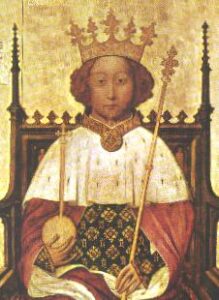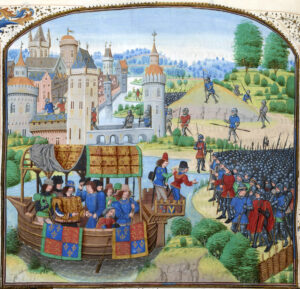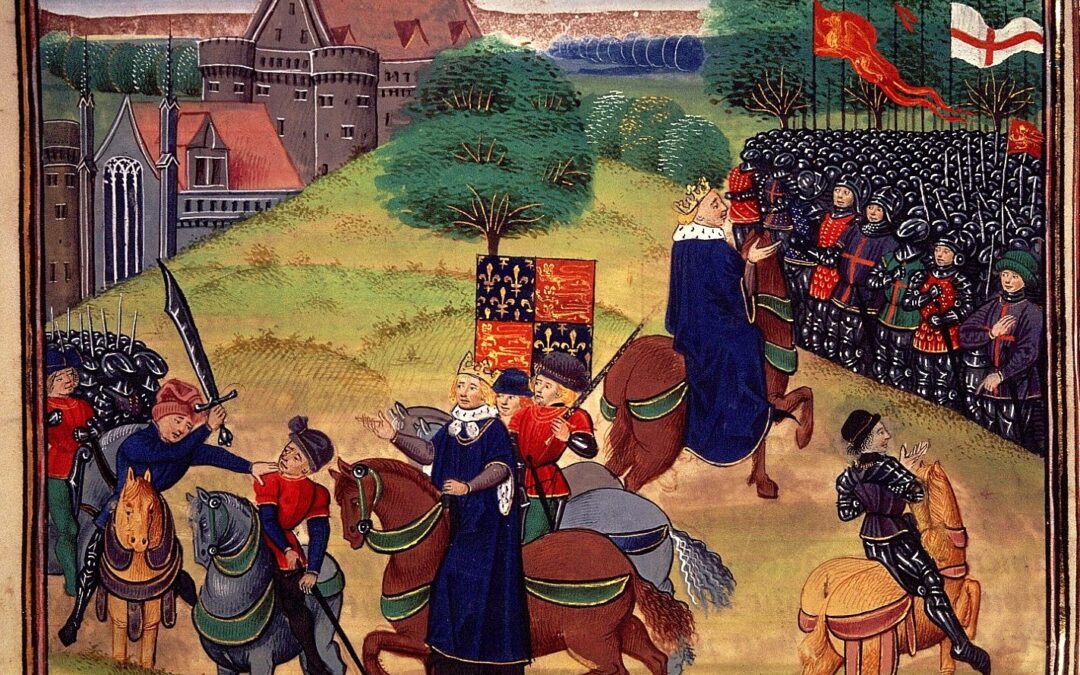Gwilym Dodd’s latest article ‘Henry Knighton, the Commons and the Crisis of Governance in the 1380s‘ is published in the latest issue of Historical Research. Here he explains more about this subject, and the problems with analysing historical writing.
‘To our very redoubtable lord the king, and to all other our lords of the realm, the humble commons of your said realm show the matter and the harm that have come about, to the displeasure of God and Holy Church, to the dishonour of you and of your crown…’.
So begins a petition presented, we are told, by the contemporary writer Henry Knighton in whose chronicle the text is recorded, in the Merciless Parliament of 1388, an assembly which met midway through the troubled reign of Richard II (1377-99). The petition sets out a litany of complaints: there was no longer peace and ‘true justice’ in the land; the king’s officials were committing extortion in the counties and living like ‘Second Kings’; the people were being taxed into a state of destitution; the inhabitants of coastal communities were having their houses burnt down by the French; the common people were so vexed that there was a real risk of further rebellion…and so on.

King Richard II
Much about this petition is fairly standard fare. Not for the first time, and certainly not for the last, would a late medieval English king face such criticism from those gathered in his parliaments. By the end of the fourteenth century, the right of MPs to present their common complaints – or common petitions – was well established. But this petition was different. It was not recorded in the official record of parliament, the parliament roll, as was usual; its critique of the state of the kingdom was unusually, perhaps even remarkably, hard-hitting; and although in form it was closely related to a conventional common petition, it deviated enough to suggest that it was compiled in a rather unusual set of circumstances.
It is a petition which has featured very prominently in the subject matter of the ‘Special Subject’ I have taught Year 3 undergraduates at the University of Nottingham for the past twenty years; but it has always occupied a rather uncomfortable position in the curriculum. The 1380s was a difficult time for the young Richard II: he faced opposition from a powerful group of disaffected nobles, as well as the recalcitrance of the broader parliamentary community whose members were becoming increasingly jittery about the vast sums of money needed to support the war and the royal household. To that extent the criticism aimed at the king rings true. But in 1388 the political community had already secured total victory over Richard II: it was known as the ‘Merciless Parliament’ because his noble opponents – the so-called Lords Appellant – had mercilessly expurgated the king’s friends from the court (either by executing or exiling them) and, for good measure, they had stripped the king of all meaningful power. At this point, Richard’s kingship was effectively in abeyance.

The Wilton Diptych
So why present a petition to the king asking him for reform? Naturally, the king remained head of state even if all power had been taken away from him; but the tone and content of the petition suggest that the citation of the king was more than simply a nod to diplomatic convention. If the petition was straightforwardly an attack on the king and his governance, why was it omitted from the official record of parliament? Historians grappling with this question have uniformly explained the anomalous text as a series of complaints presented not against the king but against the Appellants, an early sign of the Commons’ discontent with the lacklustre performance of these ambitious and unscrupulous magnates. But this also raises difficult questions: why should the Commons have turned on these nobles when all other evidence suggests they were closely allied in their attack on the court in 1388? In multiple ways, these traditional explanations do not quite ring true.
My research has led me to a number of alternative hypotheses, each linked by the underpinning premise that Henry Knighton basically got it wrong in assigning the petition to the Merciless Parliament of 1388. Medieval chroniclers have been likened to modern tabloid writers, diarists, news commentators and bloggers, which may all contain elements of truth, but one thing they were not was infallible. Knighton, like other contemporary chroniclers, wrote his ‘journal‘ on current affairs by combining his own narrative (often offering very personalised viewpoints and commentary) with the inclusion of a variety of documents drawn from other sources, the latter used to flesh out the narrative and ‘add value’. Often chroniclers wrote some time after the events they were commenting on. So mistakes could happen. Their separation from these events chronologically might also have been compounded by their physical distance: Henry Knighton was a canon at the Augustinian abbey of St Mary of the Meadows in Leicester and almost certainly was not present in person to witness the events of the Merciless Parliament. We do not know how the petition came to be in his hands, but almost certainly it was via a third party.

Jean Froissart, Chroniques
The mysterious circumstances surrounding this document thus constitute not so much a ‘who dunnit’ as ‘when was it done, and why’. After considering a number of possibilities, in the end, I argue that it was compiled in the parliament of November 1381. There were only seven years separating the two parliaments, but the circumstances in which the earlier assembly met were very different. The key context was the Peasants’ Revolt of 1381. I suggest that this formed the vital backdrop for a petition that painted such a bleak and alarming picture of the state of the kingdom. In this new setting, the petition throws fascinating light on the troubled relationship between the king and the political community. But it also, possibly, alters where our sympathies lie. In the scenario that the petition had been presented in 1388, it could be seen as a legitimate call by the parliamentary Commons for better rule by the king; but in the scenario that it had been presented in 1381, when Richard II was only fourteen years old, the suspicion has to be that the petition was devised, in part, to make as much capital as possible out of the political trauma caused by the revolt, even if this was at the expense of the king’s right to exercise, legitimately, his regal authority.
None of this, of course, is provable. It is a hypothesis based on a reassessment of the most likely circumstances in which the petition was written and presented. In researching this topic I have been drawn to the question of how far historical writing ought to rest on speculation; how far, so to speak, evidence can be pushed to fit new hypotheses and narratives. These can be tricky waters to navigate, especially when sources are limited and their meaning ambiguous. But I have also been struck by the difficulties which medieval chroniclers faced in compiling their accounts of events, and by the intriguing possibility that Henry Knighton may have been as baffled by this document as modern historians appear to be.


